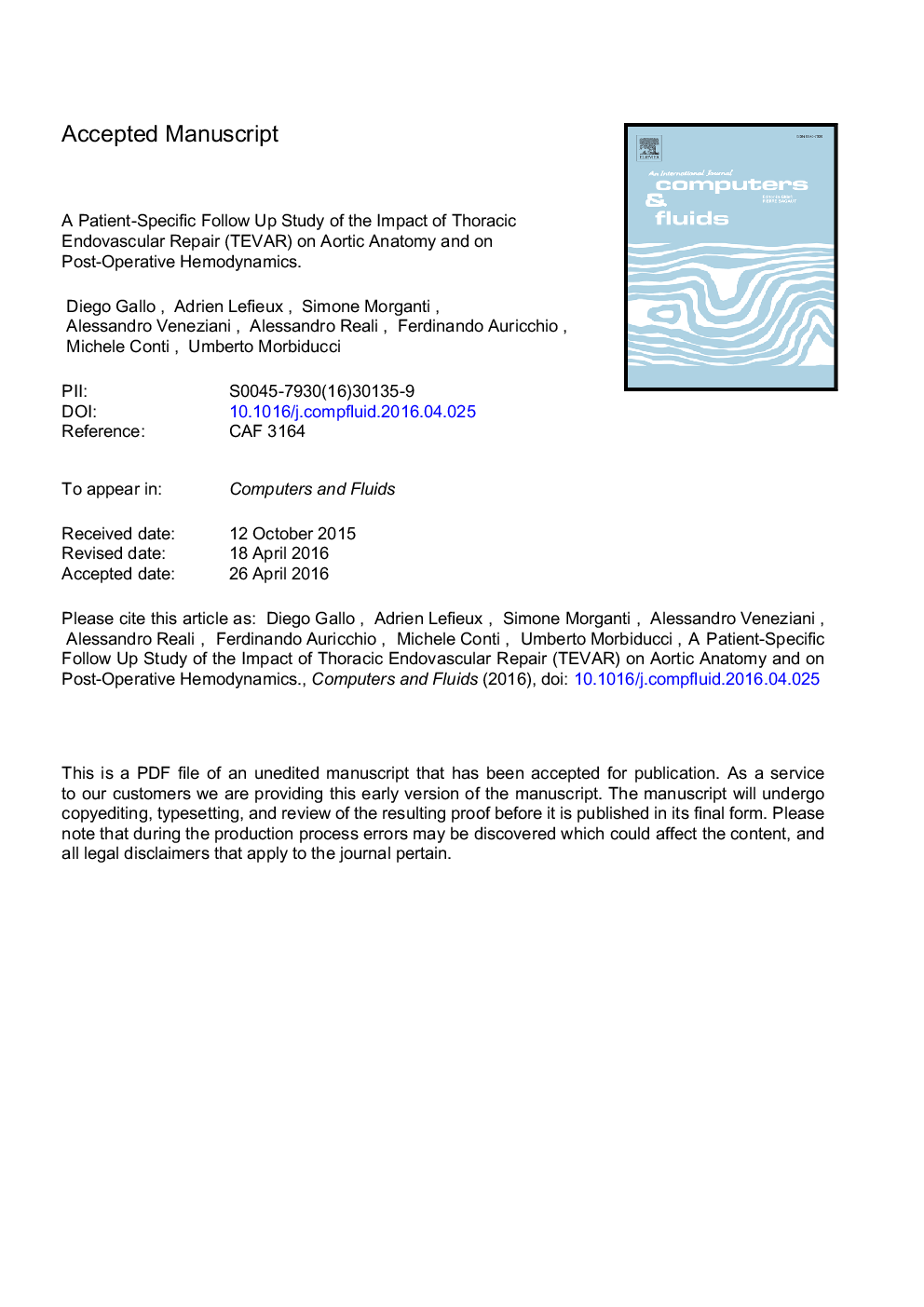| Article ID | Journal | Published Year | Pages | File Type |
|---|---|---|---|---|
| 5011959 | Computers & Fluids | 2016 | 23 Pages |
Abstract
Thoracic endovascular repair (TEVAR) is a minimally invasive alternative to classical open-chest surgery for pathologies of thoracic aorta such as aneurysms or dissections. It consists of the deployment of one or more endografts to either exclude aneurysms pressurization or seal entry tears of dissection. It is a minimally invasive procedure, yet long-term efficacy is still to be demonstrated and analyzed, depending on the geometry and the consequent hemodynamics and remodeling induced by the intervention. In this paper we consider a TEVAR patient by an extensive computational analysis of pre-op, post-op, and one-year follow up data. We focus on both geometrical features like curvature, torsion and area variations, as well as near-wall and intravascular flow-related quantities (i.e., wall shear stress-based descriptors and helicity). Comparison of the different morphologies indicates a partial restoration of normal flow in the region of interest, even though low WSS are still present with the associated risks. Overall, this study demonstrates the efficacy of quantitative computational tools in understanding the long-term impact of TEVAR.
Related Topics
Physical Sciences and Engineering
Engineering
Computational Mechanics
Authors
Diego Gallo, Adrien Lefieux, Simone Morganti, Alessandro Veneziani, Alessandro Reali, Ferdinando Auricchio, Michele Conti, Umberto Morbiducci,
